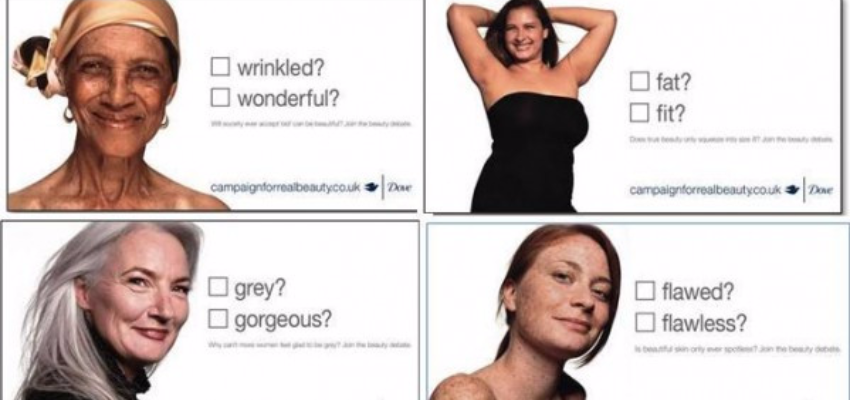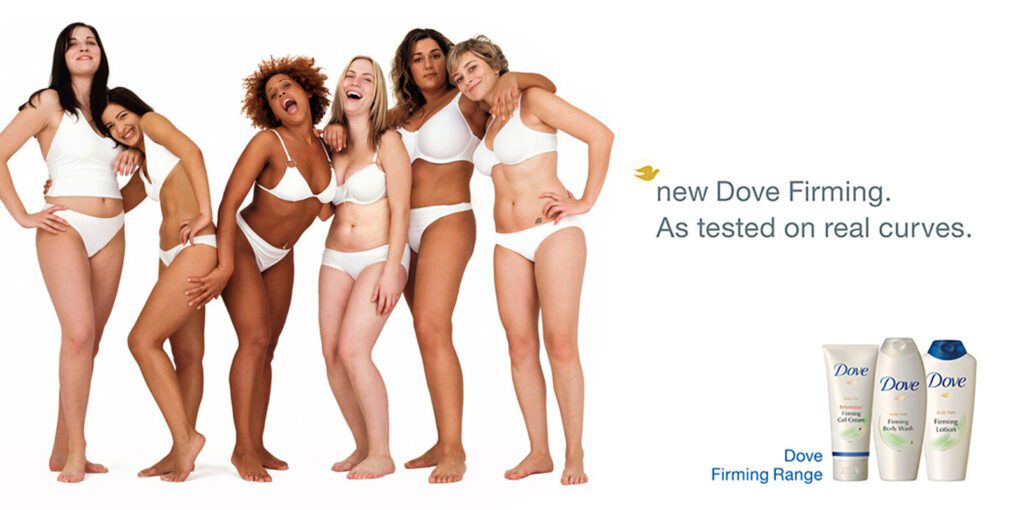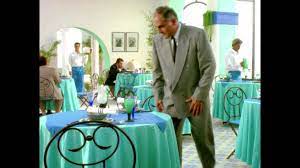Iconic Ads: Dove – Real Beauty

The beauty industry’s portrayal of women was inaccurate. And Dove attempted to change this by delving into “Real Beauty”
During a strategy meeting in 2002, a predominantly lady agency-client team (Ogilvy and Unilever) tried to explain to their male colleagues why women dislike most beauty advertising.
The team had interviewed women to learn about their opinions towards beauty and how they were portrayed in the media. A study also had been conducted by Edelman (PR agency)
Dove, began with a cleansing Beauty Bar after WWII and extended to other products, was looking for a dramatic global message to make Dove iconic.
The ladies were fully aware that the beauty industry’s portrayal of women was inaccurate. The ladies were feeling sad, seeing the contrast between these idealistic visions and their practical realities, demoralising them.
They were confirmed after talking to feminist philosophers like Naomi Wolf, Gloria Steinem, and Susie Orbach. They should make ads that question conventional beauty standards. Persuading the team’s men to understand took skill. Dennis Lewis, the agency’s creative director, was initially suspicious of the strategy. Until he discussed it with his wife. And heard this analogy from Daryl Fielding, the agency’s global category partner: “Imagine worrying every day that your dick isn’t large enough.” Men aren’t bombarded with pictures that make them feel uneasy.”
This stunning analogy helped Dove’s “Campaign for Real Beauty” with its white-panty-clad brigade of real women. In addition, the team was struck by the fact that most of the competition’s firming lotion and cream ads featured size 2 youngsters who wouldn’t need such products.
So Dove commissioned Harvard professor Nancy Etcoff, and author of Survival of the Prettiest and Orbach, author of Fat is a Feminist Issue, to create a global report. A poll of 3,200 women by the corporation found that only 2% of women worldwide think they are gorgeous. Both the customer and the agency identified an untapped feeling. Even though Dove had always used real women in its ads rather than models or actors, the firm wanted to make a stronger statement about real women and beauty.
“We wanted to democratize beauty and involve more women in its definition,” Johnson says. “For all these ladies who have been disheartened or annoyed by the imagery around them. “We’re reaching out to all ladies who have been frustrated “
The proposal had two creative approaches. One, a bigger branding push portraying attractive ladies with wrinkles, freckles, and full dimensions. “Wrinkled?” or “Wonderful?” were examples of hypothetical queries in the advertisement. A tag line directed consumers to the campaign’s website (www.campaignforrealbeauty.com) to vote and debate beauty issues. But it was the firming ads that caught the eye.

The skin-firming advertising, like the tick-box campaign, featured actual women who were spotted in health clubs, yoga studios, on the street, and during open auditions. They couldn’t be actors or models, but they had to have curves and a certain amount of charisma. The women had to use the firming goods for weeks before being photographed after being cast in cities. Beyond their apparent appearances, they were all chosen for their uniqueness.
The original concept for the firming campaign was to replicate legendary imagery of voluptuous women, such as Venus rising from the sea and Marilyn Monroe’s skirt bursting. However, he claims that the iconic photographs “got in the way” of the real-women message. He asked Rankin, a well-known fashion photographer, what he would do instead. Lewis explains, “He said, ‘Let them be themselves.'”
All the results were dynamically updated and shown on the billboard itself. The “Dove Report,” business research commissioned by Unilever to “[establish] a new concept of beauty [that] would free women from self-doubt and encourage them to embrace their true beauty,” accompanied the billboard commercials.




